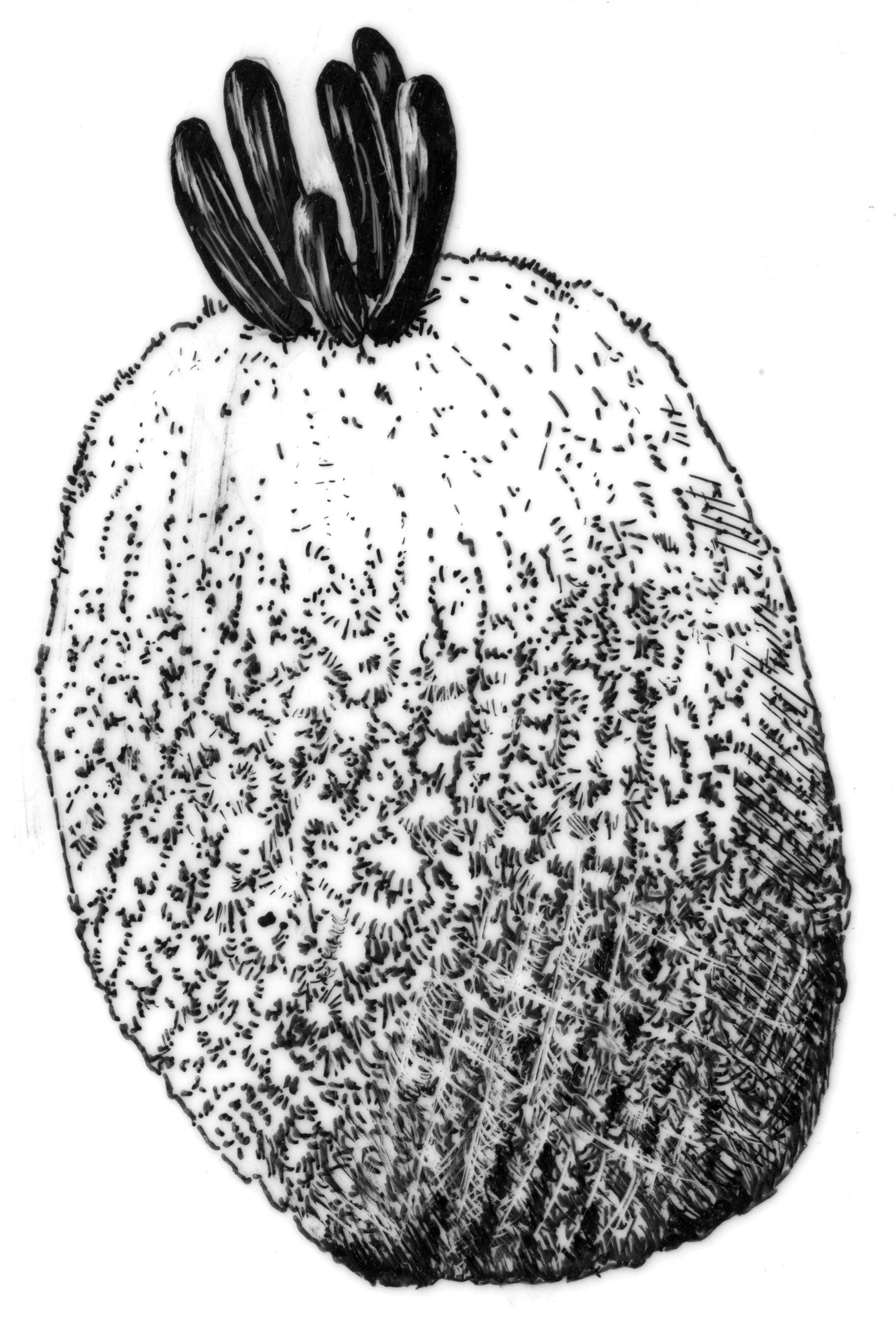
Greek epi—on, thele—nipple, anthos—flower, referring to the flowers that arise next to the spine areoles at the tips of the tubercles.
Body solitary or in clusters, small, more or less spherical, to about 6 cm wide. Tubercles small, forming ribs. Spines numerous and often so dense as to conceal the tubercles; glands are borne at the tips of upper spines at first. Flowers diurnal, 3-12 mm wide, white or pale orange to pink, borne next to the spine areole towards the tip of the tubercles at the woolly stem apex; perianth segments and stamens few. Pericarpel and flower tube naked. Fruit club-shaped, fleshy, red, without surface structures.
Like Mammillaria but flowers arising at the body apex and next to the spine areole, not from the axil of the tubercle. Body often concealed by dense spination, tubercles extremely small (less than 1 mm high).
A genus of 1 variable species that has been divided into 6 varieties all endemic to the Chihuahuan Desert region of SW USA and NE Mexico.
Glass & Foster (1978).
Source: (1997). Cactaceae. In: . Horticultural Flora of South-eastern Australia. Volume 2. Flowering plants. Dicotyledons. Part 1. The identification of garden and cultivated plants. University of New South Wales Press.
